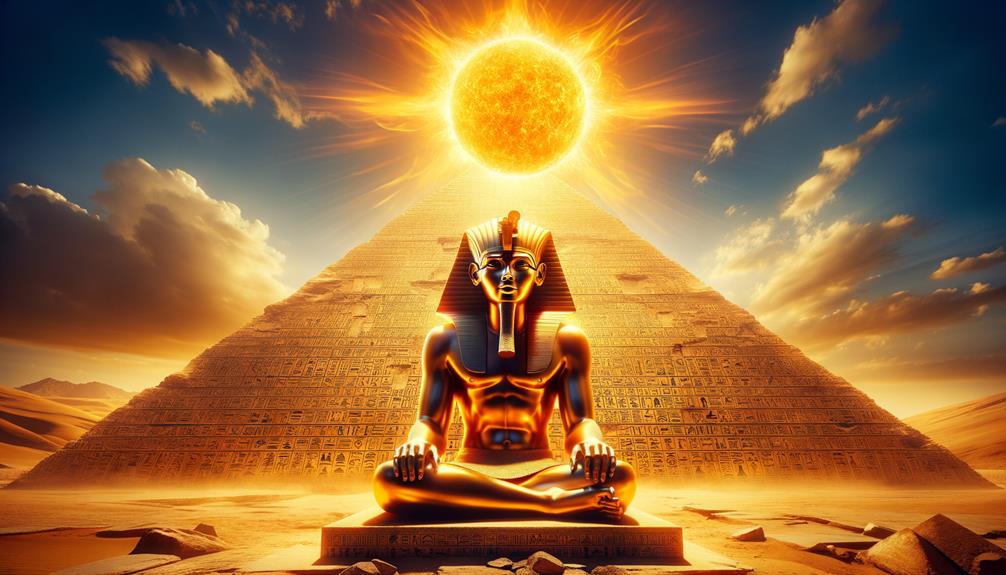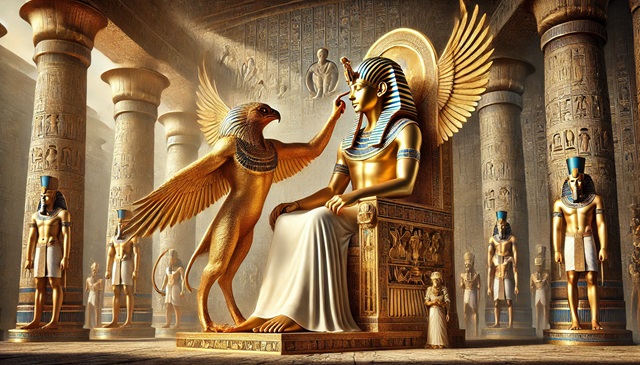
ancient egyptian gods
Ancient Egyptian mythology is a rich tapestry interwoven with tales of gods, creation, and the afterlife. Central to this mythology are deities like Ra and Osiris, who embody forces of nature and humanity's deepest fears and hopes. These stories provide insight into the ancient Egyptians' worldview, demonstrating their quest for meaning in the complexities of life.
Significance of Ancient Egyptian Gods in Religion and Culture
The gods of ancient Egypt were not merely figures of worship; they played pivotal roles in everyday life. They were seen as protectors and guides, influencing:
- Agriculture: Ensuring a bountiful harvest was attributed to the blessings of deities like Hathor.
- Pharaoh’s Rule: The pharaoh was often viewed as a divine entity, linking the human and divine realms.
Their lasting impact is evident today, highlighting the profound connection between ancient Egyptians and their pantheon of gods.

Ancient Egyptian Pantheon
Major Deities in Ancient Egyptian Mythology
The major deities of ancient Egypt were adored in temples and homes alike, each representing vital aspects of life and nature. Notable gods included:
- Ra: The sun god, revered as a creation force.
- Osiris: God of the afterlife, symbolizing resurrection.
- Isis: Goddess of magic and motherhood, known for her compassion.
These gods deeply influenced both daily life and esoteric practices, shaping community values and rituals.
Lesser-Known Gods and Goddesses
While the major deities often took center stage, lesser-known gods and goddesses also played significant roles in Egyptian culture:
- Bastet: The cat goddess, associated with home and fertility.
- Anubis: Guardian of the afterlife, depicted with a jackal head, highlighting his role in mummification.
These deities, though less prominent, were integral in fulfilling the spiritual and societal needs of the community, each adding unique dimensions to the wider mythological framework.

Symbolism and Iconography
Symbols Associated with Different Gods
Symbols played a crucial role in conveying the essence of each ancient Egyptian god. For instance:
- Ankh: Representing life and immortality, commonly associated with various deities.
- Eye of Horus: Symbolizing protection and royal power, often linked to Horus himself.
- Was Scepter: Signifying power and dominion, held by many gods during rituals.
These symbols weren’t just artistic choices; they encapsulated deep spiritual meanings.
Depiction of Gods in Art and Hieroglyphs
The portrayal of gods in ancient Egyptian art and hieroglyphs was both intricate and intentional. Gods were depicted with distinct characteristics, making them easily recognizable:
- Ra: Often shown with a falcon head, radiating sun disks.
- Isis: Frequently illustrated with a throne-shaped crown, emphasizing her role as a matriarch.
Such careful depictions were not merely decorative but served as a means of communication, transcending language and instantly conveying complex ideas about divinity and human connection to the sacred.

Stories and Myths
Creation Myth of Ancient Egypt
The creation myth of ancient Egypt is a captivating tale, reflecting the civilization's unique understanding of the world. At the heart of this myth lies a primordial chaos called Nun. From this chaos, the god Atum emerged, who created himself and began the process of shaping the universe. He birthed gods like Shu (air) and Tefnut (moisture), setting in motion the world's order.
Popular Legends Involving Egyptian Gods
Many legends featuring Egyptian gods have captivated the imagination throughout history. One such tale is the epic love story of Isis and Osiris.
- Osiris is murdered by his brother Set, who is envious of his throne.
- Isis, filled with determination and love, embarks on a quest to retrieve his body, illustrating themes of devotion and resurrection.
These stories not only entertained but also conveyed moral lessons and cultural values, solidifying the importance of gods in shaping both history and human experiences.

Worship and Rituals
Temples Dedicated to Specific Deities
Temples were the heart of worship in ancient Egypt, each dedicated to a specific deity. These ornate structures, like the grand Temple of Karnak, served not only as places of worship but also as centers of economic and political activity. Inside, priests performed daily rituals to honor:
- Amun: The king of the gods, whose temple became a pilgrimage site.
- Hathor: Linked to love and fertility, her temple was often adorned with vibrant artwork.
These sacred spaces allowed the community to connect with their gods on a personal level.
Ceremonies and Festivals Honoring the Gods
Ceremonies and festivals were vibrant celebrations that brought people together to honor their deities. Festivals like the Opet Festival showcased a procession carrying the statue of Amun, inviting public participation and joy. Activities included:
- Music and Dance: Engaging performances that expressed devotion.
- Feasting: Community gatherings that reinforced social bonds and shared beliefs.
Such events were essential not only for worship but also for reinforcing cultural identity, making ancient Egyptian religion a communal experience rich in tradition and celebration.











